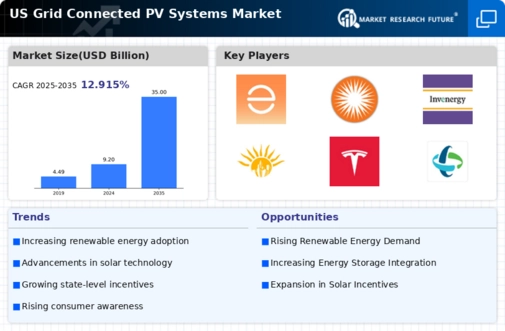The US Grid Connected PV Systems Market has seen a substantial increase in demand as the focus on renewable energy intensifies. Competitive insights reveal that companies within this sector are rigorously innovating to capture market share and enhance grid reliability. The industry has witnessed technological advancements in photovoltaic systems, with players strategizing on product differentiation and competitive pricing to attract both commercial and residential customers. Furthermore, government incentives and environmental policies play a crucial role in driving competition, prompting businesses to explore sustainable practices and aim for operational efficiency.
As the market matures, strategic partnerships and collaborations are becoming more prevalent, allowing companies to expand their reach and improve their offerings in the grid-connected solar energy space.Enphase Energy stands out in the US Grid Connected PV Systems Market due to its innovative approach and technology-driven solutions. With a strong focus on microinverter technology, Enphase Energy offers reliable solar energy solutions that optimize system performance and efficiency.
The company's commitment to quality, research, and development has solidified its position as a leader in the residential solar sector. Moreover, Enphase Energy capitalizes on comprehensive customer support services, enhancing user experiences and fostering brand loyalty. Their robust presence in the market allows for an extensive distribution network, which effectively caters to various customer segments, contributing to their ongoing success in the US renewable energy landscape.PSEG has established itself as a prominent player in the US Grid Connected PV Systems Market, operating with a focus on integrated energy solutions that cater to diverse customer needs.
The company provides a broad range of products and services, including solar generation and energy storage systems, which are essential for enhancing energy resilience and emissions reduction. PSEG's strategic investments in infrastructure and technology have positioned it favorably for future growth. The company has also undergone significant mergers and acquisitions to bolster its market presence and capabilities. By expanding its offerings and enhancing efficiencies, PSEG exemplifies its strengths in the energy sector while actively contributing to the shift towards sustainable energy practices in the United States.













